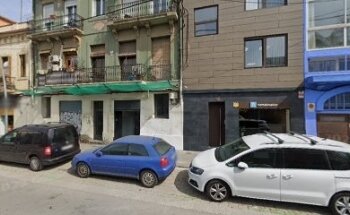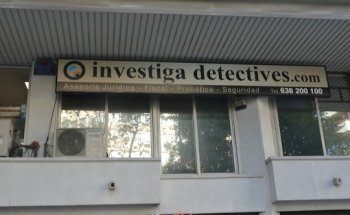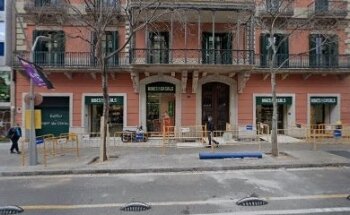
Urban Resilience, S.L.

Información sobre Urban Resilience, S.L.
Horario de apertura
- Domingo: (closed)
- Lunes: 9h-18h
- Martes: 9h-18h
- Miércoles: 9h-18h
- Jueves: 9h-18h
- Viernes: 9h-18h
- Sábado: 9h-18h
Today, 55% of the world’s population lives in urban areas, a proportion that is expected to increase to 68% by 2050.How can we respond to these urban challenges?
SUMOSU Stations propose a basic network of stations that provide publicly accessible charging infrastructure for the whole e-mobility system of a city, looking after the needs of users ranging from e-taxis to city electric buses, car-sharing fleets and private users. Moreover, these stations have also been designed to become key infrastructures to enable an efficient interaction with the grid, increase its safety and reliability and favour locally-based energy distribution and autonomy.
As any steady-state infrastructure, SUMOSU Stations are simple in terms of building components, but powerful in relation to the impacts of policy and technology choices they foster. They respond to the most important challenges that sustainable urban planning is facing at the moment and can be a turning point for alternative energy developments andintegrated systems of public transport.
As a distinctive value opposed to most current systems, SUMOSU Stations offer an open solution allowing different actors to incorporate at any point and thus, avoiding absolute market power.
Small convenience store , coffee shop or space for vending machines to offer users the chance of drinking a cup of coffee while their charge is in process.
Second life battery energy storage system for emergency demand response service. The usage of battery energy storage systems (BESS) opens the possibility for integrating renewable energies.
Battery powered multimodal micromobility hubs which are capable of securing and charging multiple types of micromobility vehicles (e-bikes, e-scooters, e-skateboards)
Possibility of installing 5G antennas, as the station can actually power itself off of some of its stationary batteries and work as an Uninterruptible Power Supply (UPS ) in the event of a power interruption.
One of the main advantage of SUMOSU Stations over the popular approach of DC fast charging station is the use of a single converter for multiple slots. Conventional fast Charging stations contain a AC/DC converter per charging point and without any storage capacity while our solution is based on the use of a single AC/DC converter for multiple charging slots leading to a common DC bus architecture as described in the graphic. In that case, the complexity of the power converters, and also the cost can be minimized.
Microgrids can be defined as a power system composed of Distributed Energy Resources (DER) that can operate as an electrical or thermal generator, a storage system or as a load, to provide maximum electrical efficiency with minimum incidence to loads in the local power grid. Since the elements that compose our project can be consideredas DER, the whole system can be considered as a specific case of a microgrid with controllable loads (electric vehicles),storage devices and grid interconnection. Generation assets like renewable resources are not included in the first stage. However, SUMOSU Stations provide a convenient way to integrate microgenerators in the future.
A basic network of stations is deployed based on a simple grid pattern. Only the minimum initial investment is required and, at the same time, range anxiety is alleviated as every user is guaranteed a fast charge spot within a 5km radius maximum.
The network can grow steadily and with no risky investments, as every new station will be built only after a minimum number of carshare membership requests is reached. This method provides the necessary critical mass to ensure the financial viability of the new facilities.
Following this system, the whole infrastructure of a city can be supplied with technical and economic feasibility. Each of these steady-state stations could be run by a different company, although all public charge points would be compatible with all cars using a fast-charging method.
Research reports, best and worst practices, and city case studies have shown that, if not accurately planned, sharing schemes can result in failure. Some of the key factors required in managing a successful carshare system are:
Carshaing should replace the use of a private car, so a car is collected in the nearest station and it must always be returned to the same location after its use. On the contrary, “drive-and-park” schemes, allowing to park in any parking space, have proved to generate a high maintenance cost, as carshare companies are taking care of the car reallocation, management of parking fees and user penalisation, and are based on unpredictable behaviours.
The advantages of electric cars as taxis are immediately obvious: low fuel cost is the first, while less noise, vibration, and a low center of gravity make a comfortable ride an easy second. Low maintenance cost is another point for electric taxis.
They also optimise car usage. A single taxi fulfils the transportation needs of 10 to 20 people per day, and generally drives many more kilometres in its lifetime than a private car, hence reducing car production needs. Therefore, taxis contribute to reducing the carbon footprint of a car’s total life cycle both per person and per kilometre.
Central locations in the city of Barcelona have the most urban mobility options because private and public transport facilities are present. However, this does not mean that mobility is easier since central areas are congested and many commuters need to go through the central area even if their destination is not the city centre itself. In locations outside the central core, a share of the population have a very expensive and limited access to public transportation and therefore, a very high rate of automobile ownership.
Imagine being able to solve network congestion and instability with no need to build extra facilities. Or being able to integrate distributed renewable power smoothly and efficiently without wasting energy and give an immedate use to the exceeding energy produced during peak hours. SUMOSU Stations have the technology and the necessary volume of energy demand to give grid operators that capability.
As a consequence of the de-centrealisation in energy and mobility, cities will devolve greater powers to councils and neighbourhoods and give local businesses. A change in shopping habits. Goods and services have become more regionalised and culturally specific. Much of urban design has shifted to a collaborative model with local participatory budgets. Where this works, everything is very tailored to the desires of the participants, for example with car-free family areas, or bicycle lanesfor everyday use. Locally owned businesses build strong communities by sustaining vibrant town centers, linking neighbors in a web of economic and social relationships, and contributing to local causes. These compact, walkable town centers are in turn essential to reducing sprawl, automobile use, congestion and pollution.
These multi-service stations provide an opportunity for immediate implementation without risky investments nor public funding, as their sound business model entails a steady expansion based exclusively on public demand. SUMOSU Stations are also strategic to overcome the “chicken and egg” effect in the e-mobility early adopter phase: they provide both the initial infrastructure for a decent network coverage as well as the required critical mass of demand from the first day. The provision of public fast charge will curb range anxiety of private users, but the prime target are vehicles of extensive use, such as delivery vans, e-taxis or local buses.
Our solution is based on a technology transfer model, allowing the system to be locally developed in every region. This choice will reinforce the local economic dynamism of every country at the same time that it will foster the rapid replication of the scheme globally. There is an urgent need for national governments and local authorities to take ownership of the e-mobility shift, get actively involved in initiatives with a holistic approach and commit to solutions that contemplate replicability and resilience from the very first stages, like SUMOSU Stations.
Designed to protect and isolate components against extreme weather conditions such as rain, snow or heat waves. The charging system allows toadapt charging times that suit differenttemperatures.
We believe that a holistic approach to sustainability is the only way to go. That is why we strive to adopt comprehensive sustainability strategies, and with an appreciation of the many links between individual issues.
As a company, we have an impact on the world in which we live, and the people we interact with. Our actions impact the communities in which we live and work, and the environment.
An easy and most cost effective way to reuse out-of-business gas stations within cities would be to tweak their original use by turning them into SUMOSU Stations, alternative transportation fueling sites. The space previously used by underground fuel tanks could easily fit the carousel of carsharing vehicles, or a battery pack designed with second-use batteries.
The integration and development of disadvantaged collectives is one of society’s challenges. To support these collectives, Urban Resilience works to offer these vulnerable groups an employment opportunity in SUMOSU Stations, which will allow them to develop professionally and personally.
SUMOSU Stations can incorporate vertical gardens: not only do they look beautiful, they also combat pollution by filtering harmful gases and help mitigate extreme summer temperatures.
Cities can go beyond responding to carsharing companies’ requests for on-street parking spaces and proactively plan the location of these spaces. SUMOSU Stations place shared cars throughout the city so that most of the population lives within a short walk of at least one carsharing location.
Because each shared car has been estimated to replace up to 17 private vehicles, dedicating on-street spaces to SUMOSU Stations can ultimately increase the availability of on-street free space and significantly reduce the city’s carbon footprint.
Removing the equivalent number of free on-street car park spaces for every built SUMOSU Station will reduce congestion due to drivers looking for a free parking spot and it will optimise the use of city-operated parking facilities. Reducing on-street parking availablility for privately owned cars will encourage more people to join carsharing schemes, creating a positive cycle that will further increase the benefits of carsharing.
Urban Resilience, S.L.: Opiniones
Deja tu opinión sobre Urban Resilience, S.L.:
Urban Resilience, S.L. aparece en los siguientes listados:
Otras agencias de detectives privados que podrían interesarte

Colegio Oficial de Detectives Privados de Cataluña

INVESTIGA DETECTIVES

️ ️ INVESTICAT Detectives Privados

ADB Detectives privados Barcelona | Detectives Barcelona

Albesa Detectives Privados



Clever Detectives Barcelona

Wired

Detectives Barcelona | Táctica Detectives

Detectives Fontanals Cabré

Invesman
Añade tu agencia de detectives a nuestro directorio de forma gratuita
Si gestionas una agencia de detectives privados y quieres aparecer en nuestro directorio, añade la información de tu empresa y podrás aparecer de forma totalmente gratuita.



